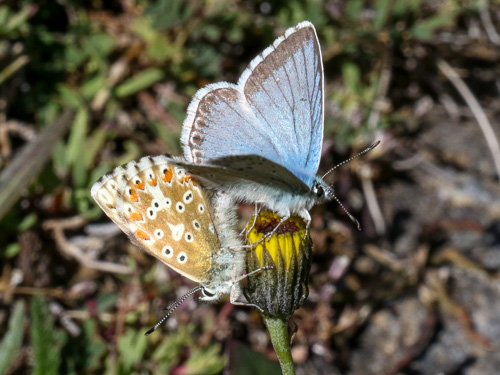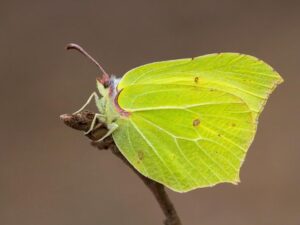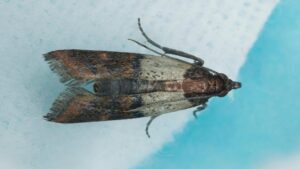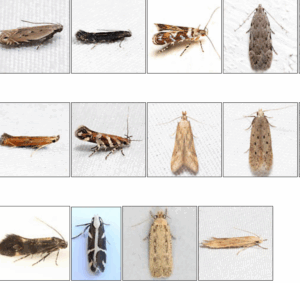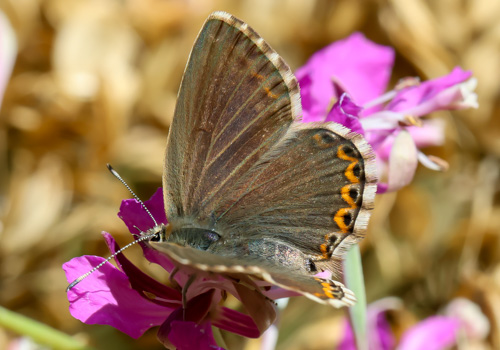
A small, widespread butterfly that occasionally visits gardens. Females are similar to Brown Argus, which lack blue dusting near the body, and to female Adonis Blue, which have dark veins extending into white fringe on wing edges. The male Chalk Hill Blue is paler and, apart from the Large Blue, larger than other blue butterflies seen in Britain and Ireland.
At some sites many hundreds may be seen in August, flying just above the vegetation, searching for females. Large numbers of males may also congregate on animal dung and other sources of moisture and minerals. Females are much less conspicuous, being duller in colour, more secretive in their habits, and spending less time than the males in flight.
The butterfly is confined to calcareous grassland in southern England and has declined in some areas during recent decades.
As its common name suggests, the chalkhill blue is found on chalk grasslands in southern England. It is on the wing from July to September. The blue males are most conspicuous as they fly around searching for the more secretive, brown females, and can sometimes be seen in huge numbers fluttering over flowers, or congregating on animal dung! The larval foodplant is horseshoe vetch and the adults often feed on knapweeds and scabiouses.
Size and Family
- Family: Blues
- Size: Small/Medium
- Wing Span Range (male to female): 38mm
Conservation Status
- Butterfly Conservation Priority: Medium
- European status: Not threatened
- Protected in Great Britain for sale only
Caterpillar Foodplant
The sole foodplant is Horseshoe Vetch (Hippocrepis comosa).
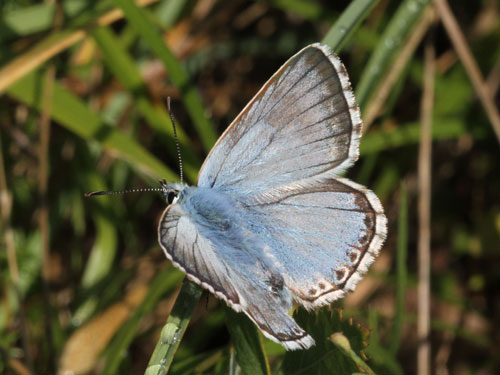
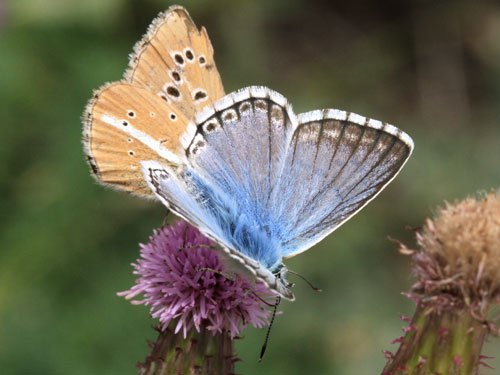
Lifecycle

Habitat
The foodplant and the butterfly are restricted to chalk and limestone grassland.
How to identify
Apart from the very rare large blue, the chalkhill blue is our largest blue butterfly. Males are silvery-blue with a dark brown border and a white fringe on the wings. The females are brown with a white fringe to the wings and a blue dusting near the body. They look similar to common blue females, but are larger and have chequered wing fringes. The orange wing spots are also less obvious in the female chalkhill blue.
As its name suggests, the Chalk Hill Blue is found on chalk downland, although limestone downland is also used. The adult butterfly is most-often seen in bright sunshine, where the ground may appear to shimmer with the activity of hundreds, if not thousands, of males searching for a mate just a few inches above the ground. The distribution of this species follows the distribution of Horseshoe Vetch which, in turn, follows the distribution of chalk and limestone grassland. This species is therefore restricted to England, south east of a line running from West Gloucestershire in the west and Cambridgeshire in the east. This species is absent from most of central England, northern England, Scotland, Wales, Ireland, the Isle of Man and the Channel Islands.
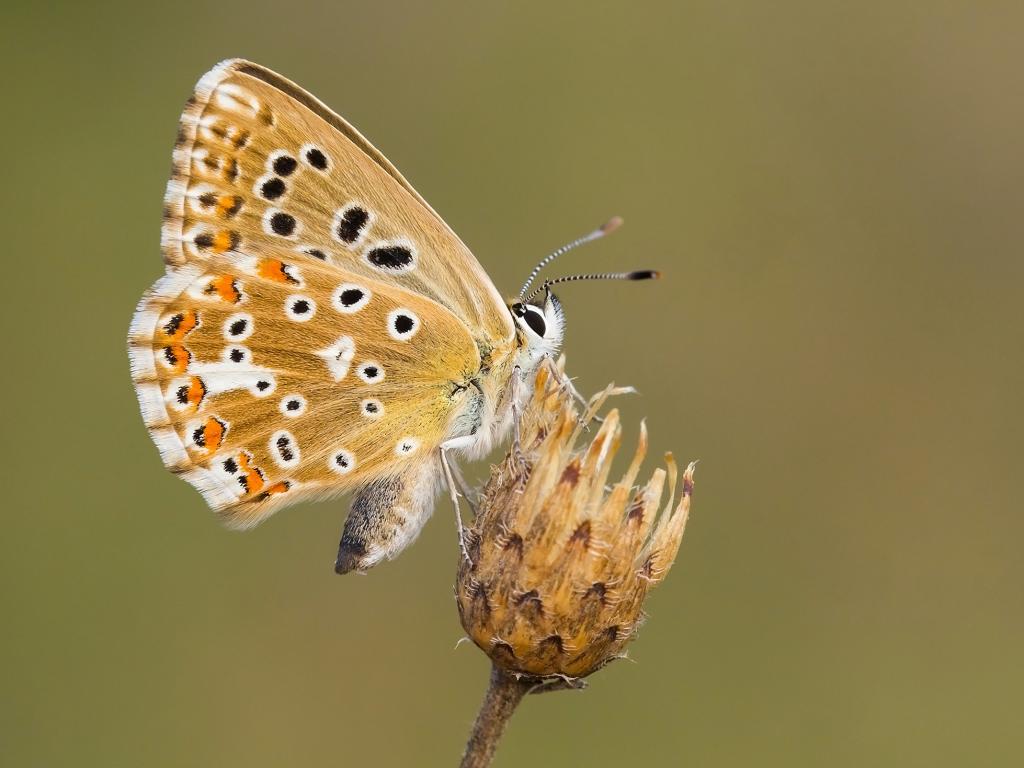
Field notes and information
The species is widespread and often common. It is part of a very complex group of taxa, with overlapping ranges and characteristics. Separation is confused by the very high level of variation between individuals. I attempt to summarise my understanding of the situation here.
Identification & Similar species: Similar species are as follows.
From northeast Spain, south France and northwest Italy, the Provencal chalk hill blue, L. hispana, is found. It is double brooded flying in April/ May and later in August/ September, most of the first brood does not overlap with the current species. I don’t know of a reliable method of separation in the summer/ autumn, althoughL. hispana is said to be greyer.
From most of Spain and north Africa the Spanish chalk hill blue, L. albicans, flies. It overlaps with the current species only in the north and the Montes Universales. It is generally larger and of an extremely pale blue, near white upperside.
Taxa often considered to be separate species but are subject to more debate are:
From the Montes Universales in Spain, the azure chalk hill blue, L. caelestissima , has males with an intense bright blue, quite unlike butterflies of other populations. See separate species page for this taxon.
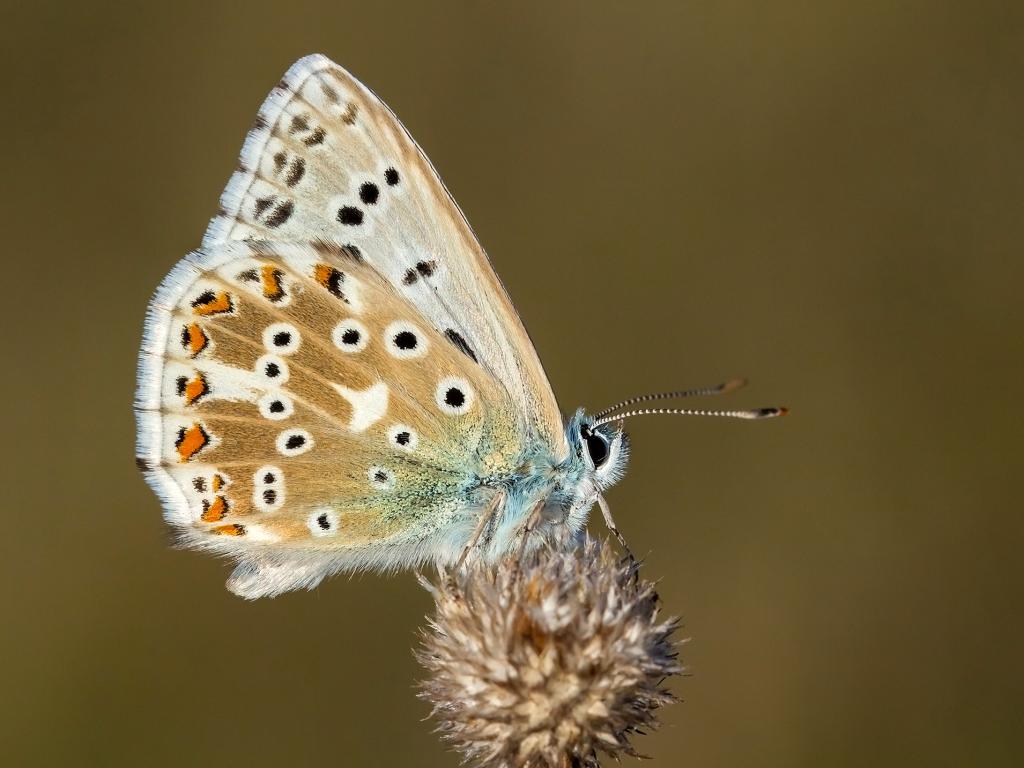
From Corsica, the Corsican chalk hill blue, L. nufrallensis, flies extremely locally on crystalline substrates. The larval food plant has only just been discovered (2009) and was new to science – only about 10 plants have so far been found, but clearly more exist as the butterfly is common where found.
From Mt Gennargentu in Sardinia, the Sardinian chalk hill blue, L. gennargenti, males are rather bright and the female has an intense blue upperside hindwing.
From northern Greece around Mt Phalakron, the Macedonian chalk hill blue, L. philippi, reportedly has different genetic make up, the significance of which is not clear. They are slightly bluer (apparantly) than “normal”.
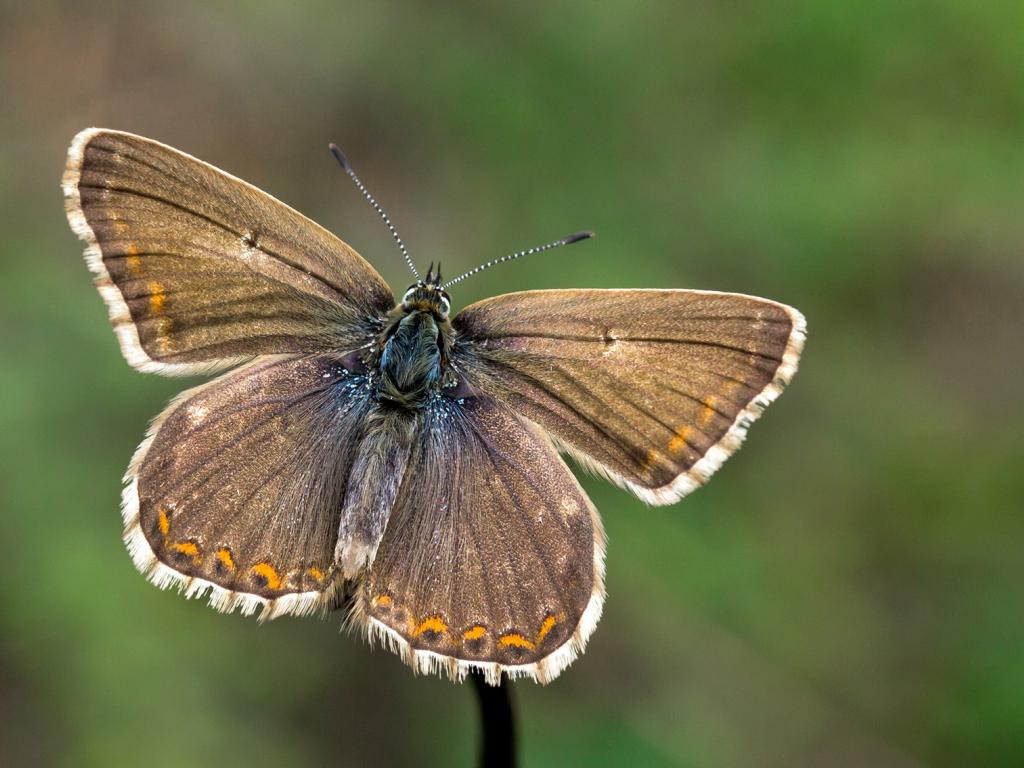
From Slovakia, the Slovakian chalk hill blue, L. slovacus, flies in a double brood rather than the more typical single brood, in a very local restricted area.
Distribution & Flight: A widespread species of chalk and limestone, sometimes crysalline sites, from north Spain and south UK and across most of Europe except Scandinavia and south Italy. Not in north Africa. Flies in a single brood from mid June to end of summer (with the exception of the taxonL. slovacus ).
Habitat & Behaviour: Usually common where found. A frequent visitor to flowers in open meadows.
Variation: Extensive in all aspects, notably the extent of the blue on the upperside, orange markings and the brown colouration of the underside. Abberations are common.
Several subspecies are generally recognised as discussed above plus the following.
From northwest Spain, subspecies asturiensis, often smaller with males of brighter silver blue upperside.

